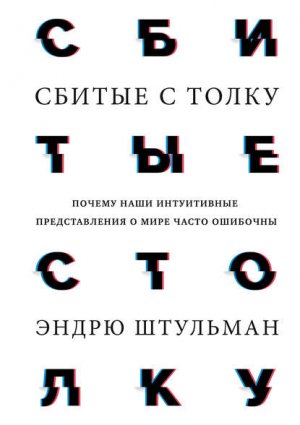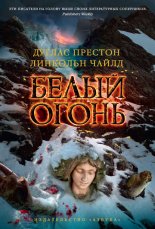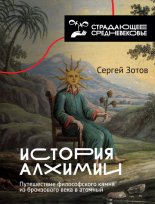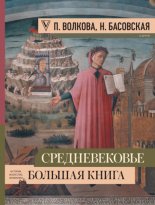—битые с толку Ўтульман Ёндрю

Carey, S. (1985). Conceptual change in childhood. Cambridge, MA: MIT Press.
Carey, S. (1988). Conceptual differences between children and adults. Mind and Language, 3, 167Ц181.
Carey, S. (1991). Knowledge acquisition: Enrichment or conceptual change. In†S.†Carey and R. Gelman (eds.), The epigenesis of mind: Essays in biology and cognition, 257Ц291. Hillsdale, NJ: Lawrence Erlbaum.
Carey, S. (2009). The origin of concepts. Oxford, UK: Oxford University Press.
Catley, K. M., and Novick, L. R. (2008). Seeing the wood for the trees: An analysis of evolutionary diagrams in biology textbooks. BioScience, 58, 976Ц987.
Catley, K. M., and Novick, L. R. (2009). Digging deep: Exploring college studentsТ knowledge of macroevolutionary time. Journal of Research in Science Teaching, 46, 311Ц332.
Catley, K. M., Novick, L. R., and Shade, C. K. (2010). Interpreting evolutionary diagrams: When topology and process conflict. Journal of Research in Science Teaching, 47, 861Ц882.
Center for Disease Control (2015). Measles cases and outbreaks. Retrieved from www.cdc.gov/measles/cases-outbreaks.html.
Chai-Elsholz, R., Carruthers, L., and Silec, T. (2011). Palimpsests and the literary imagination of medieval England: Collected essays. London: Palgrave Macmillan.
Chamberlin, R. T. (1928). Some of the objections to WegenerТs theory. In W. A. J. M. van Waterschoot van der Gracht (ed.), The theory of continental drift: A symposium, 83Ц87. Tulsa, OK: American Association of Petroleum Geologists.
Champagne, A. B., Klopfer, L. E., and Anderson, J. H. (1980). Factors influencing the learning of classical mechanics. American Journal of Physics, 48, 1074Ц1079.
Chang, H. Y., and Linn, M. C. (2013). Scaffolding learning from molecular visualizations. Journal of Research in Science Teaching, 50, 858Ц886.
Chi, M. (1992). Conceptual change within and across ontological categories: Examples from learning and discovery in science. In R. Giere (ed.), Cognitive models of science, 129Ц186. Minneapolis: University of Minnesota Press.
Chi, M. T. H. (2005). Commonsense conceptions of emergent processes: Why some misconceptions are robust. Journal of the Learning Sciences, 14, 161Ц199.
Chi, M. T. H., Roscoe, R. D., Slotta, J. D., Roy, M., and Chase, C. C. (2012). Misconceived causal explanations for emergent processes. Cognitive Science, 36, 1Ц61.
Chi, M. T. H., Slotta, J. D., and De Leeuw, N. (1994). From things to processes: A theory of conceptual change for learning science concepts. Learning and Instruction, 4, 27Ц43.
Chiou, G. L., and Anderson, O. R. (2010). A study of undergraduate physics studentsТ understanding of heat conduction based on mental model theory and an ontology-process analysis. Science Education, 94, 825Ц854.
Christensen, K. D., Jayaratne, T. E., Roberts, J. S., Kardia, S. L. R., and Petty, E. M. (2010). Understandings of basic genetics in the United States: Results from a national survey of black and white men and women. Public Health Genomics, 13, 467Ц476.
Cialdini, R. B., and Goldstein, N. J. (2004). Social influence: Compliance and conformity. Annual Review of Psychology, 55, 591Ц621.
Clagett, M. (1961). The science of mechanics in the Middle Ages. Madison: University of Wisconsin Press.
Clark, D. B. (2006). Longitudinal conceptual change in studentsТ understanding of thermal equilibrium: An examination of the process of conceptual restructuring. Cognition and Instruction, 24, 467Ц563.
Clark, D. B., DТAngelo, C. M., and Schleigh, S. P (2011). Comparison of studentsТ knowledge structure coherence and understanding of force in the Philippines, Turkey, China, Mexico and the United States. Journal of the Learning Sciences, 20, 207Ц261.
Clement, J. (1982). StudentsТ preconceptions in introductory mechanics. American Journal of Physics, 50, 66Ц71.
Clement, J. (1993). Using bridging analogies and anchoring intuitions to deal with studentsТ preconceptions in physics. Journal of Research in Science Teaching, 30, 1241Ц1257.
Clement, J., Brown, D. E., and Zietsman, A. (1989). Not all preconceptions are misconceptions: finding Ђanchoring conceptionsї for grounding instruction on studentsТ intuitions. International Journal of Science Education, 11, 554Ц565.
Clough, E. E., and Driver, R. (1985). Secondary studentsТ conceptions of the conduction of heat: Bringing together scientific and personal views. Physics Education, 20, 176Ц182.
Coley, J. D. (2012). Where the wild things are: Informal experience and ecological reasoning. Child Development, 83, 992Ц1006.
Coley, J. D., Medin, D., Proffitt, J., Lynch, E., and Atran, S. (1999). Inductive reasoning in folkbiological thought. In D. Medin and S. Atran (eds.), Folkbiology, 205Ц232. Cambridge, MA: MIT Press.
Coley, J. D., and Tanner, K. (2015). Relations between intuitive biological thinking and biological misconceptions in biology majors and nonmajors. CBE-Life Sciences Education, 14, 8, 1Ц19.
Corlett, E. N., and Wilson, J. R., and Corlett, N. (1995). Evaluation of human work. London: Taylor and Francis.
Cottrell, J. E., and Winer, G. A. (1994). Development in the understanding of perception: The decline of extramission perception beliefs. Developmental Psychology, 30, 218Ц228.
Couprie, D. L. (2011). Heaven and earth in ancient Greek cosmology. New York: Springer.
Cross, D. V., and Rotkin, L. (1975). The relation between size and apparent heaviness. Perception and Psychophysics, 18, 79Ц87.
Curtis, V., Aunger, R., and Rabie, T. (2004). Evidence that disgust evolved to protect from risk of disease. Proceedings of the Royal Society of London B: Biological Sciences, 271, 131Ц133.
Dar-Nimrod, I., Cheung, B. Y., Ruby, M. B., and Heine, S. J. (2014). Can merely learning about obesity genes affect eating behavior? Appetite, 81, 269Ц276.
Dar-Nimrod, I., and Heine, S. J. (2006). Exposure to scientific theories affects womenТs math performance. Science, 314, 435Ц435.
Dar-Nimrod, I., and Heine, S. J. (2011). Genetic essentialism: On the deceptive determinism of DNA. Psychological Bulletin, 137, 800Ц818.
Darwin, C. (1844, January 11). Letter to Joseph Dalton Hooker. Retrieved from http://www.darwinproject.ac.uk/letter/?docId=letters/DCP-LETT-729.xml.
Darwin, C. (1859). On the origin of species by means of natural selection. London: John Murray. »здание на русском €зыке: ƒарви톄. ѕроисхождение видов путем естественного отбора. Ћ.: Ќаука, 1991.
Dawson, P., Han, I., Cox, M., Black, C., and Simmons, L. (2007). Residence time and food contact time effects on transfer of Salmonella Typhimurium from tile, wood and carpet: testing the five-second rule. Journal of Applied Microbiology, 102, 945Ц953.
De Waal, F. (2006). Morally evolved: Primate social instincts, human morality, and the rise and fall of ЂVeneer Theoryї. In S. Macedo and J. Ober (eds.), Primates and philosophers: How morality evolved, 1Ц58. Princeton, NJ: Princeton University Press.
DeJesus, J. M., Shutts, K., and Kinzler, K. D. (2015). Eww she sneezed! Contamination context affects childrenТs food preferences and consumption. Appetite, 87, 303Ц309.
Diakidoy, I. A., Vosniadou, S., and Hawks, J. D. (1997). Conceptual change in astronomy: Models of the earth and of the day/night cycle in American-Indian children. European Journal of Psychology of Education, 12, 159Ц184.
Diamond, A. (1985). Development of the ability to use recall to guide action, as indicated by infantsТ performance on AB. Child Development, 56, 868Ц883.
Diamond, A., and Goldman-Rakic, P S. (1989). Comparison of human infants and rhesus monkeys on PiagetТs AB task: Evidence for dependence on dorsolateral prefrontal cortex. Experimental Brain Research, 74, 24Ц40.
Diesendruck, G., and Haber, L. (2009). GodТs categories: The effect of religiosity on childrenТs teleological and essentialist beliefs about categories. Cognition, 110, 100Ц114.
Ding, D., Maibach, E. W., Zhao, X., Roser-Renouf, C., and Leiserowitz, A. (2011). Support for climate policy and societal action are linked to perceptions about scientific agreement. Nature Climate Change, 1, 462Ц466.
DiSessa, A. A. (2008). A birdТs-eye view of the Ђpiecesї vs. Ђcoherenceї controversy (from the Ђpiecesї side of the fence). In S. Vosniadou (ed.), International handbook of research on conceptual change, 35Ц60. New York: Routledge.
Dobzhansky, T. (1973). Nothing in biology makes sense except in the light of evolution. American Biology Teacher, 35, 125Ц129.
Dokov, W., and Dokova, K. (2011). Epidemiology and diagnostic problems of electrical injury in forensic medicine. In D. N. Vieira (ed.), Forensic medicine: From old problems to new challenges, 121Ц136. Rijeka, Croatia: InTech.
Donner, S. D., and McDaniels, J. (2013). The influence of national temperature fluctuations on opinions about climate change in the U.S. since 1990. Climatic Change, 118, 537Ц550.
Donovan, B. M. (2014). Playing with fire? The impact of the hidden curriculum in school genetics on essentialist conceptions of race. Journal of Research in Science Teaching, 51, 462Ц496.
Dunbar, K., Fugelsang, J., and Stein, C. (2007). Do naive theories ever go away? Using brain and behavior to understand changes in concepts. In M. Lovett and P. Shah (eds.), Thinking with data, 193Ц206. New York: Lawrence Erlbaum Associates.
Duncan, R. G., and Tseng, K. A. (2011). Designing project-based instruction to foster generative and mechanistic understandings in genetics. Science Education, 95, 21Ц56.
Eckstein, S. G., and Kozhevnikov, M. (1997). Parallelism in the development of childrenТs ideas and the historical development of projectile motion theories. International Journal of Science Education, 19, 1057Ц1073.
Elkind, D. (1961). ChildrenТs discovery of the conservation of mass, weight, and volume: Piaget replication study II. Journal of Genetic Psychology, 98, 219Ц227.
Emmons, N. A., and Kelemen, D. A. (2015). Young childrenТs acceptance of within-species variation: Implications for essentialism and teaching evolution. Journal of Experimental Child Psychology, 139, 148Ц160.
Erickson, G. L. (1979). ChildrenТs conceptions of heat and temperature. Science Education, 63, 221Ц230.
Evans, E. M. (2001). Cognitive and contextual factors in the emergence of diverse belief systems: creation versus evolution. Cognitive Psychology, 42, 217Ц266.
Evans, E. M., and Lane, J. D. (2011). Contradictory or complementary? Creationist and evolutionist explanations of the origin(s) of species. Human Development, 54, 144Ц159.
Evans, E. M., Spiegel, A. N., Gram, W., Frazier, B. N., Tare, M., Thompson, S., and Diamond, J. (2010). A conceptual guide to natural history museum visitorsТ understanding of evolution. Journal of Research in Science Teaching, 47, 326Ц353.
Fallon, A. E., Rozin, P., and Pliner, P. (1984). The childТs conception of food: The development of food rejections with special reference to disgust and contamination sensitivity. Child Development, 55, 566Ц575.
Field, D. (1987). A review of preschool conservation training: An analysis of analyses. Developmental Review, 7, 210Ц251.
Fischbein, E., Stavy, R., and Ma-Naim, H. (1989). The psychological structure of naive impetus conceptions. International Journal of Science Education, 11, 71Ц81.
Foisy, L. M. B., Potvin, P., Riopel, M., and Masson, S. (2015). Is inhibition involved in overcoming a common physics misconception in mechanics? Trends in Neuroscience and Education, 4, 26Ц36.
Fox, R. (1971). The caloric theory of gases: From Lavoisier to Regnault. Oxford, UK: Clarendon.
Frappart, S., Raijmakers, M., and Frede, V. (2014). What do children know and understand about universal gravitation? Structural and developmental aspects. Journal of Experimental Child Psychology, 120, 17Ц38.
Freyd, J. J., and Jones, K. T. (1994). Representational momentum for a spiral path. Journal of Experimental Psychology: Learning, Memory and Cognition, 20, 968Ц976.
Galilei, G. (1590/1960). On motion. Madison: University of Wisconsin Press. »здание на русском €зыке: √алилей, √. ќ движении†/ √.†√алилей†// »збранные труды: в†2†т.†ћ.: Ќаука, 1964.
Galilei, G. (1632/1953). Dialogue concerning the two chief world systems, Ptolemaic and Copernican. Oakland: University of California Press. »здание на русском €зыке: √алилей, √.†ƒиалог о двух системах мира†/ √.†√алилей.†ћ.; Ћ.: √»““Ћ, 1948.
Galili, I. (2001). Weight versus gravitational force: Historical and educational perspectives. International Journal of Science Education, 23, 1073Ц1093.
Geerdts, M. S., Van de Walle, G. A., and LoBue, V. (2015). Daily animal exposure and childrenТs biological concepts. Journal of Experimental Child Psychology, 130, 132Ц146.
Gelman, S. A., and Legare, C. H. (2011). Concepts and folk theories. Annual Review of Anthropology, 40, 379Ц398.
Gelman, S. A., Ware, E. A., and Kleinberg, F. (2010). Effects of generic language on category content and structure. Cognitive Psychology, 61, 273Ц301.
Gelman, S. A., and Wellman, H. M. (1991). Insides and essences: Early understandings of the non-obvious. Cognition, 38, 213Ц244.
Gervais, W. M. (2015). Override the controversy: Analytic thinking predicts endorsement of evolution. Cognition, 142, 312Ц321.
Goldberg, R. F., and Thompson-Schill, S. L. (2009). Developmental Ђrootsї in mature biological knowledge. Psychological Science, 20, 480Ц487.
Gopnik, A. (1997). Words, thoughts, and theories. Cambridge, MA: MIT Press.
Gopnik, A., and Wellman, H. M. (2012). Reconstructing constructivism: Causal models, Bayesian learning mechanisms, and the theory theory. Psychological Bulletin, 138, 1085Ц1108.
Gottesman, M. (1973). Conservation development in blind children. Child Development, 44, 824Ц827.
Gould, S. J. (1985, June). The median isnТt the message. Discover Magazine.
Gould, S. J. (1987). Bushes all the way down. Natural History, 96, 12Ц19.
Gould, S. J. (1992). Ever since Darwin: Reflections in natural history. New York: Norton.
Gould, S. J. (1996). Full house: The spread of excellence from Plato to Darwin. New York: Three Rivers Press.
Gould, S. J. (1997). Redrafting the tree of life. Proceedings of the American Philosophical Society, 141, 30Ц54.
Gregg, V. R., Winer, G. A., Cottrell, J. E., Hedman, K. E., and Fournier, J. S. (2001). The persistence of a misconception about vision after educational interventions. Psychonomic Bulletin and Review, 8, 622Ц626.
Gregory, T. R. (2009). Understanding natural selection: Essential concepts and common misconceptions. Evolution: Education and Outreach, 2, 156Ц175.
Gripshover, S. J., and Markman, E. M. (2013). Teaching young children a theory of nutrition: Conceptual change and the potential for increased vegetable consumption. Psychological Science, 24, 1541Ц1553.
Gruber, H. E. (1981). Darwin on man: A psychological study of scientific creativity. Chicago: University of Chicago Press.
Gutheil, G., Vera, A., and Keil, F. C. (1998). Do houseflies think? Patterns of induction and biological beliefs in development. Cognition, 66, 33Ц49.
Haidt, J., McCauley, C., and Rozin, P. (1994). Individual differences in sensitivity to disgust: A scale sampling seven domains of disgust elicitors. Personality and Individual Differences, 16, 701Ц713.
Halloun, I. A., and Hestenes, D. (1985). Common sense concepts about motion. American Journal of Physics, 53, 1056Ц1065.
Hannust, T., and Kikas, E. (2010). Young childrenТs acquisition of knowledge about the earth: A longitudinal study. Journal of Experimental Child Psychology, 107, 164Ц180.
Hardy, I., Jonen, A., Mller, K., and Stern, E. (2006). Effects of instructional support within constructivist learning environments for elementary school studentsТ†understanding of floating and sinking. Journal of Educational Psychology, 98, 307Ц326.
Harlow, D. B., Swanson, L. H., Nylund-Gibson, K., and Truxler, A. (2011). Using latent class analysis to analyze childrenТs responses to the question, ЂWhat is a day?ї Science Education, 95, 477Ц496.
Harris, P. L., and Gimenez, M. (2005). ChildrenТs acceptance of conflicting testimony: The case of death. Journal of Cognition and Culture, 5, 143Ц164.
Harrison, E. R. (1981). Cosmology. Cambridge, UK: Cambridge University Press.
Haslam, N., Rothschild, L., and Ernst, D. (2000). Essentialist beliefs about social categories. British Journal of Social Psychology, 39, 113Ц127.
Hatano, G., Siegler, R. S., Richards, D. D., Inagaki, K., Stavy, R., and Wax, N. (1993). The development of biological knowledge: A multi-national study. Cognitive Development, 8, 47Ц62.
Hayes, B. K., Goodhew, A., Heit, E., and Gillan, J. (2003). The role of diverse instruction in conceptual change. Journal of Experimental Child Psychology, 86, 253Ц276.
Heddy, B. C., and Nadelson, L. S. (2012). A global perspective of the variables associated with acceptance of evolution. Evolution: Education and Outreach, 5, 412Ц418.
Heddy, B. C., and Nadelson, L. S. (2013). The variables related to public acceptance of evolution in the United States. Evolution: Education and Outreach, 6, 1Ц14.
Heinrich, B. (1999). Mind of the raven. New York: Harper Collins.
Herrmann, P., Waxman, S. R., and Medin, D. L. (2010). Anthropocentrism is not the first step in childrenТs reasoning about the natural world. Proceedings of the National Academy of Sciences, 107, 9979Ц9984.
Hespos, S. J., and Baillargeon, R. (2008). Young infantsТ actions reveal their developing knowledge of support variables: Converging evidence for violation-of-expectation findings. Cognition, 107, 304Ц316.
Hood, B. M. (1995). Gravity rules for 2- to 4-year olds? Cognitive Development, 10, 577Ц598.
Hood, B. M. (1998). Gravity does rule for falling events. Developmental Science, 1, 59Ц63.
Hood, B., Carey, S., and Prasada, S. (2000). Predicting the outcomes of physical events: Two-year-olds fail to reveal knowledge of solidity and support. Child Development, 71, 1540Ц1554.
Hood, B. M., Hauser, M. D., Anderson, L., and Santos, L. (1999). Gravity biases in a non-human primate? Developmental Science, 2, 35Ц41.
Hood, B. M., Santos, L., and Fieselman, S. (2000). Two-year-oldsТ naive predictions for horizontal trajectories. Developmental Science, 3, 328Ц332.
Hood, B. M., Wilson, A., and Dyson, S. (2006). The effect of divided attention on inhibiting the gravity error. Developmental Science, 9, 303Ц308.
Horne, Z., Powell, D., Hummel, J. E., and Holyoak, K. J. (2015). Countering antivaccination attitudes. Proceedings of the National Academy of Sciences, 112, 10321Ц10324.
Hotchkiss, J. H. (2001). Lambasting Louis: Lessons from pasteurization. In A. Eaglesham, S. G. Pueppke, and R. W. F. Hardy (eds.), Genetically modified food and the consumer, 51Ц68. Ithaca, NY: National Agricultural Biotechnology Council.
Howe, C., Tavares, J. T., and Devine, A. (2012). Everyday conceptions of object fall: Explicit and tacit understanding during middle childhood. Journal of Experimental Child Psychology, 111, 351Ц366.
Hrepic, Z., Zollman, D. A., and Rebello, N. S. (2010). Identifying studentsТ mental models of sound propagation: The role of conceptual blending in understanding onceptual change. Physical Review Special Topics: Physics Education Research, 6, 1Ц18.
Huntley-Fenner, G., Carey, S., and Solimando, A. (2002). Objects are individuals but stuff doesnТt count: Perceived rigidity and cohesiveness influence infantsТ representations of small groups of discrete entities. Cognition, 85, 203Ц221.
IFLScience (2015, January 29). Richard Dawkins reads hate mail from Ђfansї. Retrieved from www.iflscience.com/editors-blog/richard-dawkins-reads-hate-mail-fans.
Inagaki, K., and Hatano, G. (1993). Young childrenТs understanding of the mind-body distinction. Child Development, 64, 1534Ц1549.
Inagaki, K., and Hatano, G. (1996). Young childrenТs recognition of commonalities between animals and plants. Child Development, 67, 2823Ц2840.
James, W. (1890/1950). The principles of psychology. Mineola, NY: Dover Publications. »задние на русском €зыке: ƒжеймс, ”Е Ќаучные основы психологии†/ ”.†ƒжеймс. ћ., 2003.
Jarrett, C. (2014). Great myths of the brain. Hoboken, NJ: Wiley-Blackwell.
Jaswal, V. K. (2010). Believing what youТre told: Young childrenТs trust in unexpected testimony about the physical world. Cognitive Psychology, 61, 248Ц272.
Jee, B. D., Uttal, D. H., Spiegel, A., and Diamond, J. (2015). Expert-novice differences in mental models of viruses, vaccines, and the causes of infectious disease. Public Understanding of Science, 24, 241Ц256.
Joh, A. S., Jaswal, V. K., and Keen, R. (2011). Imagining a way out of the gravity bias: Preschoolers can visualize the solution to a spatial problem. Child Development, 82, 744Ц750.
Johnson, S. (2007). The ghost map. New York: Riverhead Books.
Johnson, S. C., and Carey, S. (1998). Knowledge enrichment and conceptual change in folkbiology: Evidence from Williams syndrome. Cognitive Psychology, 37, 156Ц200.
Johnson, S. C., and Solomon, G. E. (1997). Why dogs have puppies and cats have kittens: The role of birth in young childrenТs understanding of biological origins. Child Development, 68, 404Ц419.
Kahan, D. M., Peters, E., Wittlin, M., Slovic, P., Ouellette, L. L., Braman, D., and Mandel, G. (2012). The polarizing impact of science literacy and numeracy on perceived climate change risks. Nature Climate Change, 2, 732Ц735.
Kaiser, M. K., Jonides, J., and Alexander, J. (1986). Intuitive reasoning about abstract and familiar physics problems. Memory and Cognition, 14, 308Ц312.
Kaiser, M. K., McCloskey, M., and Proffitt, D. R. (1986). Development of intuitive theories of motion: Curvilinear motion in the absence of external forces. Developmental Psychology, 22, 67Ц71.
Kaiser, M. K., Proffitt, D. R., and Anderson, K. (1985). Judgments of natural and anomalous trajectories in the presence and absence of motion. Journal of Experimental Psychology: Learning, Memory and Cognition, 11, 795Ц803.
Kaiser, M. K., Proffitt, D. R., and McCloskey, M. (1985). The development of beliefs about falling objects. Perception and Psychophysics, 38, 533Ц539.
Kaiser, M. K., Proffitt, D. R., Whelan, S. M., and Hecht, H. (1992). Influence of animation on dynamical judgments. Journal of Experimental Psychology: Human Perception and Performance, 18, 669Ц89.
Kalish, C. W. (1996). PreschoolersТ understanding of germs as invisible mechanisms. Cognitive Development, 11, 83Ц106.
Keil, F. C. (1992). Concepts, kinds, and cognitive development. Cambridge, MA: MIT Press.
Keil, F. C. (2003). Folkscience: Coarse interpretations of a complex reality. Trends in Cognitive Sciences, 7, 368Ц373.
Keil, F. C., and Batterman, N. (1984). A characteristic-to-defining shift in the development of word meaning. Journal of Verbal Learning and Verbal Behavior, 23, 221Ц236.
Kelemen, D. (2004). Are children Ђintuitive theistsї? Reasoning about purpose and design in nature. Psychological Science, 15, 295Ц301.
Kelemen, D., Rottman, J., and Seston, R. (2013). Professional physical scientists display tenacious teleological tendencies: Purpose-based reasoning as a cognitive default. Journal of Experimental Psychology: General, 142, 1074Ц1083.
Kempton, W. (1986). Two theories of home heat control. Cognitive Science, 10, 75Ц90.
Keynes, J. M. (1936). The general theory of employment, interest, and money. London: Macmillan. »здание на русском €зыке: ейнс, ƒж. ћ.†ќбща€ теори€ зан€тости, процента и денег. »збранное†/ ƒж. ћ.† ейнс.†ћ.: Ёксмо, 2007.
Kim, E., and Pak, S. J. (2002). Students do not overcome conceptual difficulties after solving 1traditional problems. American Journal of Physics, 70, 759Ц765.
Kim, I. K., and Spelke, E. S. (1999). Perception and understanding of effects of gravity and inertia on object motion. Developmental Science, 2, 339Ц362.
Kimel, S. Y., Huesmann, R., Kunst, J. R., and Halperin, E. (2016). Living in a genetic world: How learning about interethnic genetic similarities and differences affects peace and conflict. Personality and Social Psychology Bulletin, 42, 688Ц700.
Kirschner, P A., Sweller, J., and Clark, R. E. (2006). Why minimal guidance during instruction does not work: An analysis of the failure of constructivist, discovery, problem-based, experiential, and inquiry-based teaching. Educational Psychologist, 41, 75Ц86.
Klahr, D., and Nigam, M. (2004). The equivalence of learning paths in early science instruction: Effects of direct instruction and discovery learning. Psychological Science, 15, 661Ц667.
Klavir, R., and Leiser, D. (2002). When astronomy, biology, and culture converge: ChildrenТs conceptions about birthdays. Journal of Genetic Psychology, 163, 239Ц253.
Kloos, H., Fisher, A., and Van Orden, G. C. (2010). Situated naive physics: Task constraints decide what children know about density. Journal of Experimental Psychology: General, 139, 625Ц637.
Kohn, A. S. (1993). PreschoolersТ reasoning about density: Will it float? Child Development, 64, 1637Ц1650.
Kolbert, E. (2006). Field notes from a catastrophe: Man, nature, and climate change. London: Bloomsbury.
Kozhevnikov, M., and Hegarty, M. (2001). Impetus beliefs as default heuristics: Dissociation between explicit and implicit knowledge about motion. Psychonomic Bulletin and Review, 8, 439Ц453.
Krist, H. (2010). Development of intuitions about support beyond infancy. Developmental Psychology, 46, 266Ц278.
Kronberger, N., Wagner, W., and Nagata, M. (2014). How natural is Ђmore naturalї? The role of method, type of transfer, and familiarity for public perceptions of cisgenic and transgenic modification. Science Communication, 36, 106Ц130.
Kuhlmeier, V. A., Troje, N. F., and Lee, V. (2010). Young infants detect the direction of biological motion in point-light displays. Infancy, 15, 83Ц93.
Kuhn, T. S. (1962). The structure of scientific revolutions. Chicago: University of Chicago Press. »здание на русском €зыке: ун, “.†—труктура научных революций†/ “.† ун. ћ.: ѕрогресс, 1977.
Kuo, L. (2012, August 28). Bill Nye, The Science Guy, says creationism is not appropriate for children. Huffington Post. Retrieved from www.huffingtonpost.com/2012/08/28/bill-nye-science-guy-creationism-evolution_n_1835208.html.
Lack, D. (1947/1983). DarwinТs finches. Cambridge, UK: Cambridge University Press.
Lautrey, J., and Mazens, K. (2004). Is childrenТs nave knowledge consistent? A comparison of the concepts of sound and heat. Learning and Instruction, 14, 399Ц423.
Lawso, R. (2006). The science of cycology: Failures to understand how everyday objects work. Memory and Cognition, 34, 1667Ц1675.
Lazar, A., and Torney-Purta, J. (1991). The development of the subconcepts of death in young children: A short-term longitudinal study. Child Development, 62, 1321Ц1333.
Le Grand, H. E. (1988). Drifting continents and shifting theories. Cambridge, UK: Cambridge University Press.
Leddon, E. M., Waxman, S. R., and Medin, D. L. (2011). What does it mean to Ђliveї and Ђdieї? A cross-linguistic analysis of parent-child conversations in English and Indonesian. British Journal of Developmental Psychology, 29, 375Ц395.
Lederberg, J. (2000). Infectious history. Science, 288, 287Ц293.
Lee, H. S., Liu, O. L., Price, C. A., and Kendall, A. L. (2011). College studentsТ temporal-magnitude recognition ability associated with durations of scientific changes. Journal of Research in Science Teaching, 48, 317Ц335.
Lee, V., and Kuhlmeier, V. A. (2013). Young children show a dissociation in looking and pointing behavior in falling events. Cognitive Development, 28, 21Ц30.
Legare, C. H., and Gelman, S. A. (2008). Bewitchment, biology, or both: The co-existence of natural and supernatural explanatory frameworks across development. Cognitive Science, 32, 607Ц642.
Legare, C. H., and Gelman, S. A. (2009). South African childrenТs understanding of AIDS and flu: Investigating conceptual understanding of cause, treatment and prevention. Journal of Cognition and Culture, 9, 333Ц346.
Leiserowitz, A., Maibach, E., Roser-Renouf, C., Feinberg, G. and Howe, P. (2013). Global warmingТs six Americas. New Haven, CT: Yale Project on Climate Change Communication.
Lewandowsky, S., Ecker, U. K., Seifert, C. M., Schwarz, N., and Cook, J. (2012). Misinformation and its correction continued influence and successful debiasing. Psychological Science in the Public Interest, 13, 106Ц131.
Lewandowsky, S., Gignac, G. E., and Vaughan, S. (2013). The pivotal role of perceived scientific consensus in acceptance of science. Nature Climate Change, 3, 399Ц404.
Lewis, E. L., and Linn, M. C. (1994). Heat energy and temperature concepts of adolescents, adults, and experts: Implications for curricular improvements. Journal of Research in Science Teaching, 31, 657Ц677.
Li, Y., Johnson, E. J., and Zaval, L. (2011). Local warming: Daily temperature change influences belief in global warming. Psychological Science, 22, 454Ц459.
Libarkin, J. C., and Anderson, S. W. (2005). Assessment of learning in entry-level geoscience courses: Results from the Geoscience Concept Inventory. Journal of Geoscience Education, 53, 394Ц401.
Libarkin, J. C., Anderson, S. W., Dahl, J., Beilfuss, M., Boone, W., and Kurdziel, J. P (2005). Qualitative analysis of college studentsТ ideas about the earth: Interviews and open-ended questionnaires. Journal of Geoscience Education, 53, 17Ц26.
Libarkin, J. C., and Schneps, M. H. (2012). Elementary childrenТs retrodictive reasoning about earth science. International Electronic Journal of Elementary Education, 5, 47Ц62.
Lindberg, D. C. (1976). Theories of vision from al-Kindi to Kepler. Chicago: University of Chicago Press.
Liu, X., and MacIsaac, D. (2005). An investigation of factors affecting the degree of naive impetus theory application. Journal of Science Education and Technology, 14, 101Ц116.
Livingston, E., and Zylke, J. W. (2012). JAMA obesity theme issue. Journal of the American Medical Association, 307, 970Ц971.
Lombardi, D., and Sinatra, G. M. (2012). College studentsТ perceptions about the plausibility of human-induced climate change. Research in Science Education, 42, 201Ц217.
Lusk, J. (2015). Food demand survey: January 2015. Stillwater Oklahoma State University Department of Agricultural Economics.
MacAvoy, A. (2015). Pentagon plans to exhume, identify hundreds killed in bombing of Pearl Harbor. www.huffingtonpost.com/2015/04/14/pentagon-pearl-harbor-identify_n_7066902.html.
MacDonald, T., and Wiley, E. O. (2012). Communicating phylogeny: Evolutionary tree diagrams in museums. Evolution: Education and Outreach, 5, 14Ц28.
MacFadden, B. J., Oviedo, L. H., Seymour, G. M., and Ellis, S. (2012). Fossil horses, orthogenesis, and communicating evolution in museums. Evolution: Education and Outreach, 5, 29Ц37.
Mahajan, N., Barnes, J. L., Blanco, M., and Santos, L. R. (2009). Enumeration of objects and substances in non-human primates: Experiments with brown lemurs (Eulemurfulvus). Developmental Science, 12, 920Ц928.
Marques, L., and Thompson, D. (1997). Misconceptions and conceptual changes concerning continental drift and plate tectonics among Portuguese students aged 16Ц17. Research in Science and Technological Education, 15, 195Ц222.
Marshak, S. (2009). Essentials of geology. New York: W. W. Norton and Company.
Marvin, U. (1973). Continental drift: The evolution of a concept. Washington, DC: Smithsonian Institution Press.
Masson, M. E., Bub, D. N., and Lalonde, C. E. (2011). Video-game training and naive reasoning about object motion. Applied Cognitive Psychology, 25, 166Ц173.
Masson, S., Potvin, P., Riopel, M., and Foisy, L. M. B. (2014). Differences in brain activation between novices and experts in science during a task involving a common misconception in electricity. Mind, Brain, and Education, 8, 44Ц55.
Masson, S., and Vazquez-Abad, J. (2006). Integrating history of science in science education through historical microworlds to promote conceptual change. Journal of Science Education and Technology, 15, 257Ц268.
Mayo Clinic (2014). Causes of frostbite. Retrieved from www.mayoclinic.org/diseases-conditions/frostbite/basics/causes/con-20034608.
Mayr, E. (1982). The growth of biological thought: Diversity, evolution, and inheritance. Cambridge, MA: Harvard University Press.
Mayr, E. (2001). What evolution is. New York: Basic Books.
Mazens, K., and Lautrey, J. (2003). Conceptual change in physics: ChildrenТs naive representations of sound. Cognitive Development, 18, 159Ц176.
McCloskey, M. (1983a). Intuitive physics. Scientific American, 248, 122Ц130.
McCloskey, M. (1983b). Naive theories of motion. In D. Gentner and A. L. Stevens (eds.), Mental models, 299Ц324. Hillsdale, NJ: Erlbaum.
McCloskey, M., Caramazza, A., and Green, B. (1980). Curvilinear motion in the absence of external forces: Naive beliefs about the motion of objects. Science, 210, 1139Ц1141.
McFerran, B., and Mukhopadhyay, A. (2013). Lay theories of obesity predict actual body mass. Psychological Science, 24, 1428Ц1436.
McNeil, N. M., Fyfe, E. R., and Dunwiddie, A. E. (2015). Arithmetic practice can be modified to promote understanding of mathematical equivalence. Journal of Educational Psychology, 107, 423Ц436.
Mead, L. S., and Mates, A. (2009). Why science standards are important to a strong science curriculum and how states measure up. Evolution: Education and Outreach, 2, 359Ц371.





